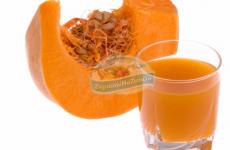How to make an armored belt in a house made of aerated concrete: all manufacturing methods. Pouring an armored belt in an aerated concrete house Reinforcement frame for an armored belt
The reinforcement in the reinforced belt consists of working reinforcement (10-12mm), and structural reinforcement of a smaller diameter (frame - 6mm). Often, reinforcement is made of 4 or 6 rods. In this article we will describe in detail and show reinforcement schemes, methods of bending reinforcement and other nuances of the reinforced belt.
The reinforcement frame is needed in order to fix the working reinforcement in the correct position. That is, two or three bars of reinforcement at the bottom of the reinforced belt, and two bars at the top.
For a frame, fittings with a diameter of 6 mm are quite suitable; you can even use thick wire.
The size of the frame should correspond to the thickness of your wall, taking into account the insulation and protective layer of concrete. Extruded polystyrene foam with a thickness of 30 to 50 mm is best suited as insulation.
Often the frame has edge dimensions of approximately 120-200 mm.
Such square frames can be easily made in the following way.
We take a board (20-50 mm thick. 200 mm wide), draw a square, for example, 150 by 150 mm, drill a hole in the corners of the square.
The holes should be about 9mm so that the 10mm reinforcement fits tightly. The reinforcing bars themselves should be about half a meter long.
Place the board on the ground, hammer four reinforcing bars through the holes of the board into the ground. The template for bending the frames is ready. It is more convenient to bend the reinforcement along the frame using a pipe. For such a frame, the reinforcement blanks should be about 600 mm long.
Working fittings of the armored belt
The working reinforcement is a thick ribbed wire with a diameter of 10 mm, preferably 12 mm. The working reinforcement in the armored belt works in bending, creating high rigidity of the structure. The reinforcement must be continuous (circular) and pass over all load-bearing walls. If the building has very long openings, then the places of the reinforced belt above the openings need to be reinforced with an additional lower reinforcement bar.

The working fittings must be inside the frame, and are tied to the frames with ordinary binding wire; welding is not needed here.
- The height of the armored belt is made from 200 to 300 mm.
- The distance between frames should be from 200 to 400mm.
- The overlap of the reinforcing bars should be 500 mm.
- To reduce the consumption of reinforcement, it is better to use longer rods to reduce the number of overlaps.
- Do not forget about the protective layer of concrete, which should be 40 mm on all sides.
At the corners, be sure to bend the working reinforcement and use additional reinforcement clamps, see the diagram below. It is convenient to bend the reinforcement using a long pipe.
Reinforcement schemes for armored belts






It is also worth noting that it is better to install the reinforcement cage at the place where it is poured, since when assembled it will weigh a lot.
The formwork must be strong enough to withstand the pressure of the concrete. Special attention Pay attention to leveling the formwork along all planes.
If professional tool If you don’t have concrete to vibrate, you can use the following method: take a hammer drill and use the hammer mode to hit the reinforcement, the concrete is compacted and air bubbles come out.
Due to the introduction of advanced technologies and the use of new building materials, the requirements for the stability of buildings and their durability have increased. To strengthen the building structure and increase the strength of load-bearing structures external walls in the upper part of the box there is a power belt in the form of a concrete contour reinforced with reinforcement. The reinforced belt evenly distributes the pressure of the roof and transfers the load to the foundation through the walls. The strength properties are affected by the height and thickness of the armored belt, as well as design features reinforcement frame and concrete grade.
Armored belt design
To smooth out loads from the weight of the roof and interfloor panels on the end plane main walls a special reinforced concrete belt is being constructed. It is also performed during the process of pouring a monolithic foundation.
Planning to build a basement, interfloor or foundation reinforced belt, you must perform the following steps:
- think over the design features of the reinforced concrete reinforcement circuit;
- pick up optimal size reinforcement and determine the height of the reinforced belt;
- purchase the building materials necessary for the construction of the armored belt.
When deciding on the design, dimensions and materials used, it is necessary to take into account the current forces at the floor level, as well as load capacity walls, for the manufacture of which porous blocks were used. When using lightweight floor slabs, it is allowed to use a less powerful reinforced belt. In this case, the width should be equal to the thickness of the walls. Let us dwell in more detail on the design features and dimensions.
In order to increase the strength of load-bearing external walls, it is necessary to make an armored belt
What is the armored belt made of?
The design of the reinforced belt is regulated by building codes. This is a power circuit that prevents deformation of the building frame.
The following building materials are used for the manufacture of reinforced belts:
- concrete mortar with marking M400 and higher. The mixture is filled with a formwork frame, inside of which there is a reinforcement grid. After the concrete hardens, a force contour is formed around the perimeter of the load-bearing walls. The concrete mixture is made according to a standard recipe based on Portland cement, crushed stone and sand. It is important to carry out concreting in one go with further compaction of the concrete mass using vibration equipment. It is important to prevent the formation of air cavities inside the monolith;
- steel bars with size cross section 0.8-1 cm. Corrugated reinforcement is cut into blanks required sizes, which are connected with knitting wire into a spatial frame. The structure consists of four longitudinally located rods connected by transverse rods. The diameter of the transverse elements is 0.6 cm. The metal lattice, which increases the load capacity of the concrete mass, has a square or rectangular cross-section in the transverse plane.
Depending on the design of the formwork, various materials are used for its manufacture:
- wood panels are used for collapsible formwork;
- the stationary structure is made of polystyrene.
It is important to ensure the rigidity and tightness of the formwork structure.
 The purpose of the reinforced belt is to help the building resist deforming loads
The purpose of the reinforced belt is to help the building resist deforming loads Height and thickness of armored belt
The dimensions of the reinforced belt are regulated by the design documentation:
- the height of the power contour is equal to its thickness in the manufacture of a reinforced belt with a square section. For rectangular design height exceeds width by 1.5-1.6 times;
- The thickness of the armored belt usually corresponds to the width of the load-bearing walls of the building. The construction technology allows for a reduced thickness of the belt, at the level of 0.7-0.8 wall thickness.
The dimensions of the power circuit are determined at the development stage of the building project.
When is it necessary to strengthen building structures with a reinforced belt?
Reinforced belt is a critical element of residential buildings, which is formed at different heights from zero mark. The armored belt is designed to solve the following problems:
- formation level base for installation of interfloor panels;
- smoothing various types loads created by roof beams;
- preventing cracking of load-bearing walls as a result of frame deformation;
- proportional distribution of loads acting on the end plane of the walls;
- reducing the likelihood of wall deformation under the influence of increased forces;
- reducing the influence of loads caused by gusts of wind;
- ensuring the stability of buildings built in sloping terrain;
- maintaining the integrity of the frames of buildings built in seismically active areas;
- increasing the safety margin building structures, which are affected by the reaction of frost heaving of the soil.
The absence of a reinforced belt erected at the upper level of load-bearing walls reduces the stability of the building.
 Armopoyas is a concrete layer laid along the external walls of a house under construction along the entire perimeter
Armopoyas is a concrete layer laid along the external walls of a house under construction along the entire perimeter It is necessary to construct an armored belt in the following situations:
- when using cellular blocks for the construction of walls;
- during the construction of houses in seismically active zones;
- when constructing buildings on problem soils.
There may be situations where you can do without a reinforced concrete belt - this is the use of bricks for the construction of capital walls, as well as pouring the foundation below the freezing level of the soil. In other cases, the reinforced belt is required element building.
Reinforced belt under prefabricated and monolithic reinforced concrete floors
There is no need to doubt whether an armored belt is needed for floor slabs. The armored belt constructed under the floor panels performs a number of serious tasks:
- increases the load capacity of walls made of cellular blocks. After all, porous concrete is prone to deformation under increased load;
- proportionally distributes the loads from interfloor covering and roofs on walls. Local forces can cause cracks to form;
- protects the building frame from cracking. The belt smooths out temperature fluctuations and increases the durability of the structure.
A reinforced edging made of reinforced concrete connects the building frame and floor slabs into a common power contour.
 The reinforced belt for floor slabs has a closed appearance
The reinforced belt for floor slabs has a closed appearance Getting ready to make a reinforced belt for slabs - building materials and tools
Planning self-production armored belt intended for installation of floor panels, prepare the necessary building materials:
- plywood, planed boards or polystyrene sheets for formwork assembly;
- Portland cement, gravel and fine sand for making concrete mixture;
- steel reinforcement and binding wire for assembling the load-bearing frame;
- polyethylene film for sealing the formwork structure;
- fasteners (screws, screws, nails) for formwork assembly.
The amount of materials is determined based on the design documentation.
To perform the work you will also need special equipment and tools:
- concrete mixer, which facilitates the preparation of large volumes of concrete mixture;
- grinder with a metal circle, used for cutting steel reinforcement;
- manual or semi-automatic device;
- building level and plumb line required when taking measurements.
When using reinforcing bars with an increased diameter, a bending device will also be required.
 In order for the layers of concrete to dry evenly, it is necessary to fill the armored belt in one stage
In order for the layers of concrete to dry evenly, it is necessary to fill the armored belt in one stage Reinforced belt construction technology - main stages
The technological process of manufacturing an armored belt provides for the following sequence of actions:
- Preparation of blanks for assembling the formwork frame.
- Assembling formwork from plywood sheets, wooden shields or sheet polystyrene.
- Cutting reinforcing bars into pieces of appropriate sizes.
- Assembling a load-bearing frame by connecting the rods using annealed wire.
- Mixing components intended for preparing concrete mortar.
- Continuous filling of the formwork structure with mortar.
- Removing air inclusions using a deep or surface vibrator.
- Maintaining the moisture content of the concrete mass by periodic wetting.
- Dismantling the formwork after the concrete solution has hardened.
Having carefully studied the technology of constructing an armored belt, it is not difficult to carry out all the operations with your own hands.
What formwork materials can be used?
Traditionally, planed wood is used to make formwork, from which panel structure. The height of the wooden edging is usually 0.3 m, and the width corresponds to the thickness of the walls. The boards are fastened with self-tapping screws. The side edging is fixed using threaded rods or strips. The horizontalness of the upper plane of the formwork should be controlled using a level. It is important to securely fasten the boards and seal all cracks.
 Planed wood is used for formwork
Planed wood is used for formwork In addition to boards, the following materials are used for the manufacture of formwork:
- moisture resistant plywood. Before pouring concrete, it is impregnated with waste oil to facilitate dismantling;
- extruded polystyrene. Polystyrene sheets are constituent element thermally insulated formwork.
The choice of material for the manufacture of formwork structures is made individually depending on the requirements of the design documentation.
Installation of fittings
Sequence of actions for installing the reinforcement cage:
- Cutting metal rods.
- Laying rods along the formwork on pads.
- Wiring the elements of the lower tier.
- Installation of cross bars.
- Attachment to vertical rods of upper level elements.
After assembling the reinforcement grid, install threaded rods or steel wire for fastening the floor elements.
How should concrete be poured?
Preparation and pouring of concrete mortar is carried out in the following sequence:
- Prepare the concrete mixture in the required volume.
- Perform continuous concreting.
- Compact the concrete using rebar or a vibrator.
- Plan the surface of the concrete mass.
- Place plastic sheeting over the concrete.
- Periodically moisten the concrete surface.
After the concrete reaches operational hardness, disassemble the formwork. The thickness of the armored belt for the floor slabs is determined by the dimensions of the formwork structure.
Conclusion
The reinforced belt under the floor panels is a mandatory element of the structure, increasing the strength properties of the structure. Correctly selected thickness of the armored belt guarantees the necessary margin of safety. The armored belt increases the service life of buildings and has a positive effect on their stability. Technological recommendations should be followed, and high-quality building materials should be used. It is not difficult to cope with the work on your own after carefully studying the technology.
The reinforcing belt is a mandatory rigidity contour necessary for the building to be truly strong and durable. It does not allow loads to “accumulate” in one or another part of the supporting structures, but distributes them evenly. Thanks to it, shrinkage of the new house, soil heaving and other external factors pass through the walls without consequences - that is, without cracks.
The brick armored belt is a small continuous masonry reinforced with longitudinal metal rods or mesh. Of course, this is not a full-fledged monolith, but in many cases this simple solution turns out to be quite enough. The ability of the armored belt to equalize loads comes in very handy if the main material of the walls is not resistant to deformation. Products like aerated concrete, even with good compressive strength, practically do not work in bending. Uneven application of force will inevitably lead to cracking.
The reinforcing belt solves this problem by taking the main load on itself and not allowing light walls shift relative to each other when exposed to multidirectional or unequal forces. It is also allowed to use brick instead of a more expensive concrete monolith for reinforcing small outbuildings and low-rise buildings. He will successfully withstand unfavorable external conditions(strong wind loads, subsidence or uneven heaving of the soil), but at the same time it is much easier to make it yourself - without haste and the need to process a decent volume of solution at a time.
Another function that a reinforced belt can perform is fastening other elements of the building to the box with anchors, if wall material He himself is not able to hold them. This is a common flaw for everyone. cellular concrete and expanded clay blocks. Traditional methods You can’t even sew a mauerlat beam to them without further destroying the walls. So what to do separating brickwork in any case it will have to.
The double reinforcing belt, placed under the sole and on the upper cut, performs well columnar foundation. In this case, seasonal soil movements will not be able to “play” with the supports, because they will actually turn into a single truss, rigidly fixed by two ties.
Main types of unloading belts
Depending on the location of the armored belt, it can have different names and take on certain functions:
- Grillage - placed between the columnar or pile foundation of the house and the walls. However, they don’t build it out of brick - it’s too important a site.
- The plinth is the second level of unloading and reinforcement, which is used in the construction of houses on a foundation made of concrete blocks. It provides the base with greater rigidity on moving soils and is also made of reinforced concrete. Although a fairly common option is brickwork, which performs the functions permanent formwork for subsequent filling.
- Unloading is an intermediate reinforced belt under the floor slabs, which not only takes on their weight, but also ensures the rigidity of the building above one floor at each level. When building from lightweight concrete blocks you cannot do without it, and here the best way is precisely the brick.
- A support under the Mauerlat is a mandatory element of a house made of aerated concrete or other porous blocks that do not easily absorb point and multidirectional loads. In addition, fastening the timber itself with studs in such walls turns out to be unreliable even when using chemical anchoring. Here, the reinforced belt for walls made of aerated concrete turns into a kind of connection between the blocks with which it is connected with mortar, and the roof truss, reinforced through a mauerlat beam.

Features of laying on aerated concrete
As a rule, the brick belt is made 4-7 rows high and the width of the wall being strengthened. Reinforcement must be performed in each horizontal seam using a steel mesh with a cell size of 3-4 cm or rigid wire with a thickness of at least 5 mm. Installation is carried out in the same way as in the case of ordinary walls made of brick:
- with seams offset by 1/3 of the length;
- with tie dressing in every third row.
If the reinforced belt for aerated concrete made of brick serves as a support for the mauerlat, you can immediately wall up vertical pins - metal threaded rods with a diameter of 12-16 mm - into the masonry. They are installed in increments of 1-1.5 m, and the depth of their embedding will depend on the thickness of the beam - it should be twice as long as the free end for attaching the Mauerlat. However, many builders advise immediately embedding cuttings to the entire height of the armored belt.
After the mortar has set, roofing felt or two layers of roofing felt are spread on the surface of the masonry. This is waterproofing that will protect the timber itself and the brick superstructure from the accumulation of condensing moisture. Next it is outlined and drilled into the right points Mauerlat is threaded onto the stud outlets and fixed on the reinforcement belt with nuts for wide washers.
Since ceramics have greater thermal conductivity than the main wall material, it turns into a kind of cold bridge (although monolithic reinforced concrete in this case behaves even worse). So that during the further operation of the building in winter period If there were no problems, you can try to “close” the contour of the cellular blocks in parallel with laying the brick. To do this, a thin GB partition is removed from the side of the premises, as if hiding the armored belt inside the aerated concrete wall. If a gap has formed between the surfaces, experts recommend additional thermal insulation.

Stages of constructing a belt under the ceiling
If the rigid contour under the roof plays the role of unloading and reliable support for the mauerlat beam, it is enough to lay it around the perimeter of the house frame. However, the use of slabs for interfloor or attic floors will force you to close rows of bricks and the middle load-bearing wall. Here, aerated concrete can also experience loads, so a rigid layer for its reinforcement is simply necessary.
No matter how light the floor slabs are, rest them directly on cellular or expanded clay concrete blocks it is forbidden. The masonry will be able to withstand their weight, but if the direction of the applied force changes, it will begin to collapse. In this case, the belt serves as a kind of buffer that distributes the pressure of the slab over the entire area of the walls, preventing push-through load-bearing structure. Refuse the powerful layer from solid brick This is possible only when the ceiling is made of wood - here they make do with a backing for the beams in one or two blocks.

Otherwise, the armored belt is under hollow core slabs built according to all the rules. Main stages of work:
- The first row is planted directly on aerated concrete using a solution. If the thickness of the main wall is standard (30 cm), laying is done in two bricks, filling the gaps with “checks”.
- Installation of reinforcing mesh along the entire belt line.
- Laying the second row according to the same pattern with subsequent reinforcement.
- The third row of bricks is bonded. Here you need to focus on the inner plane of the wall. The gap remaining outside is filled with either quarters or pieces of mineral wool, if an insulated ventilated facade is being erected at the same time.
Under the top row of aerated concrete, on which the belt for the floor slabs is placed, reinforcement must be laid in the grooves. This will add rigidity to the entire structure and provide the walls with additional protection from cracks. Otherwise, once they appear, they will crawl lower.
According to the above diagram, the armored belt is laid out all the way required height, after which you can safely install floor slabs on it. Anchoring is carried out in the standard way for brick walls - using L-shaped metal brackets. Fastening elements are covered with a layer of cement mortar to protect against corrosion.
Reading time ≈ 3 minutes
The reinforced belt is considered one of the most important stages construction block house. It is done at the end of each floor. The armored belt on aerated concrete gives rigidity to the entire surface of the house, “gluing” the entire structure together and strengthening the entire house.
If you doubt own strength and skills, you can invite specialists for these purposes, but those who are more or less versed in the construction business are quite capable of filling the armored belt, following the step-by-step instructions.
How to make an armored belt for aerated concrete?

To do this, you need to buy additional blocks 10 cm thick. outside at home the blocks are laid using glue, then from extruded polystyrene or mineral wool a thermal circuit is arranged. Then, 5 cm thick blocks or formwork in the form of plywood are placed from the inside of the house. The result is a homemade block, inside of which the reinforcement for the armored belt is placed, from 8 to 12 in diameter.

It is laid in the form of a rectangle, while frames are knitted - two rods at the top and bottom. In any market you can purchase special fastening sprockets that are used in the work. This is done so that the reinforcement does not lie on the block itself, but is in the air - a so-called protective layer concrete, with a gap of 3 cm at the top and bottom.
After this, concrete is poured, carefully leveled, and a ready-made reinforced belt for the floor slabs is obtained. More detailed description can be seen in the video, also in the photo there are drawings, diagrams and step-by-step instruction for the manufacture of the structure.

If you look closely, you can see studs around the entire perimeter, to which the ceilings will subsequently be attached so that the roof is kept as level as possible and does not move to the sides. The length of the studs depends on the thickness of the overlap. As a rule, meter-long elements are taken and cut in half.
How to properly fill an armored belt with your own hands? This question worries many, especially novice craftsmen. Probably, many are familiar with the picture when concrete is poured from a special sleeve concrete pump, delivering the material to the desired location. But in most cases, the installation of an armored belt does not allow this task to be completed, since concrete under pressure will fall from high altitude, and the formwork may simply fly apart. Therefore, it is often necessary to use manual labor, no matter how heavy it may be.

When pouring an armored belt in a house made of aerated concrete, the subsequent load should be calculated. If it is not supposed to be too large, you can save money. The volume of the structure can be made smaller, but not by narrowing it, but by reducing the thickness. Experienced craftsmen they know how to correctly calculate the dimensions of an armored belt and reduce the cost of its production, without losing the quality of the entire structure, which is very important.

As for filling, there is one more important advice. This process should be performed one-time, and not in several passes. If this is not possible, then it is recommended to first install special wooden jumpers. When the time comes to pour a new part, the ceiling is removed, the joints are thoroughly moistened, and only then can a new portion of concrete be poured.

At the end of laying, it is necessary to compact the concrete mixture to eliminate voids. To do this, take a piece of reinforcement and pierce the concrete with it. If work is carried out in the summer, when high temperature, then it is recommended to cover the armored belt under the Mauerlat with polyethylene so that moisture does not evaporate and cracks do not form on the surface.
Reinforced belt for aerated concrete under floor beams
Progressive technologies are being introduced in the construction industry and new materials are being created. The popularity of cellular types of concrete used for residential construction has increased. Gas concrete, which has many advantages, is widely used. However, the material lacks strength and requires reinforcement to prevent cracks. To eliminate the problem, an armored belt is installed on aerated concrete. This increases the resistance of the building walls to loads and the strength characteristics of the structure.
Construction of a monolithic reinforced concrete structure along the perimeter of the building allows you to strengthen areas prone to cracks. These are permanent walls that support floor loads, door and window openings. The monolithic belt prevents the impact of deformation of the structure as a result of wind loads, seismic activity, soil reaction, and also allows for fastening under floor beams.
Independent construction of an armored belt for aerated concrete requires certain training, special knowledge, and the use of high-quality materials. Let's take a closer look at this technology and consider...

Armopoyas is a structure along the entire perimeter of the upper walls of a reinforced concrete structure
Features of the material
When deciding to use aerated concrete for the construction of walls, you should familiarize yourself with the properties of the material and its performance characteristics. This will ensure that you have made the right choice for execution. construction work. The manufacturing technology involves the formation of air cells in the concrete mass.
It is thanks to the air cavities evenly distributed in the concrete monolith that the material has increased thermal insulation characteristics and is used for the construction of buildings that do not require special insulation. The use of aerated concrete for the construction of capital walls significantly reduces space heating costs.
Aerated concrete has many positive characteristics. Main advantages:
- increased thermal insulation coefficient, allowing a 25% reduction in the cost of maintaining a comfortable temperature regime;
- resistance to negative temperatures, allowing the material to maintain its integrity under the influence of repeated freezing cycles;
- elevated soundproofing characteristics, making it difficult for extraneous noise to penetrate;
- environmentally friendly material that does not have a negative impact on human health;
- the possibility of accelerated processing and cutting of aerated concrete without the use of special equipment, allowing to give the material the required configuration;
- light weight, which reduces the load on the foundation and facilitates the process of transporting aerated concrete products;
- the impossibility of the formation of mold, mildew and rot on the surface and in the depths of the massif.

If the reinforced belt on aerated concrete was created immediately before the construction of the roof, then the Mauerlat is laid on top of it
An armored belt for aerated concrete can prevent cracking of the aerated concrete mass caused by reduced strength characteristics. Reinforcement of an aerated concrete structure with a reinforcement cage and durable concrete mortar is carried out in problem areas that need strengthening.
Device and purpose
How does an armored belt for aerated concrete work? The design is a monolithic contour closed around the perimeter of the building, made of M300 concrete and steel reinforcement frames. To ensure the building's resistance to external and internal factors, strong reinforcement frames are installed at different levels of the building. They are intended for the following purposes:
- Compensation for efforts associated with shrinkage of the base.
- Ensuring the stability of the structure during soil heaving.
- Formation of a structure resistant to gusts of wind.
- Strengthening the supporting surface of walls that absorb roof loads.
- Ensuring the possibility of building a building on an inclined ground surface.
- Preserving the integrity of buildings located in areas with increased seismic activity.

Before you make a reinforcing belt on aerated concrete with your own hands, you need to thoroughly understand what exactly it is intended for and what important functions it performs
The impact of these factors on aerated concrete walls, not reinforced with a reinforcement circuit, can violate the integrity of the building. Having a simple design, a monolithic belt is necessary for a building constructed from aerated concrete composite.
What caused the need to strengthen aerated concrete?
During the construction of buildings, there are certain design features that make it necessary to make an armored belt on aerated concrete. Let's look at these factors:
- fasteners used during installation truss structure, cause a local impact on the supporting surface, which is prone to the formation of cracks that violate the integrity of the array;
- roof support structure on base hanging rafters creates bursting loads that tend to displace the main walls. The monolithic belt dampens the spacer forces and distributes them proportionally over the upper tier;
- The monolithic reinforcing contour makes it difficult for the walls to shrink, as they perceive the acting forces differently.
There is no need to doubt whether an armored belt is needed for gas-filled concrete? It is necessary because it performs an important function - it compensates for loads, ensuring the integrity of the structure.

It should be noted that it also contributes uniform distribution all possible loads along the wall
Problem areas
To strengthen loaded areas, an armored belt is formed on aerated concrete. The reinforcing circuit is performed at different levels. Let's look at the areas that require reinforcement:
- The area between the foundation and the first row aerated concrete masonry subject to significant forces from the building wall and ceiling. The height of the armored belt is 40 cm, which allows you to proportionally distribute the load transmitted by the mass of the building to the base.
- Every 4th block is made with steel mesh or reinforcing bars.
- The supporting surface of the main walls, which is the basis for the floor beams, bears the weight of the roof. For reinforcement, steel rods with a diameter of 12 mm are used, combined into a closed reinforcing loop that distributes forces from supporting structure roofs.
- Openings for doors and windows require strong reinforcement. They are reinforced with steel rods with a diameter of 10 mm, placed in the grooves of aerated concrete blocks. After installing the rods, the grooves are concreted, ensuring the strength of the openings that can bear the mass of the masonry.






